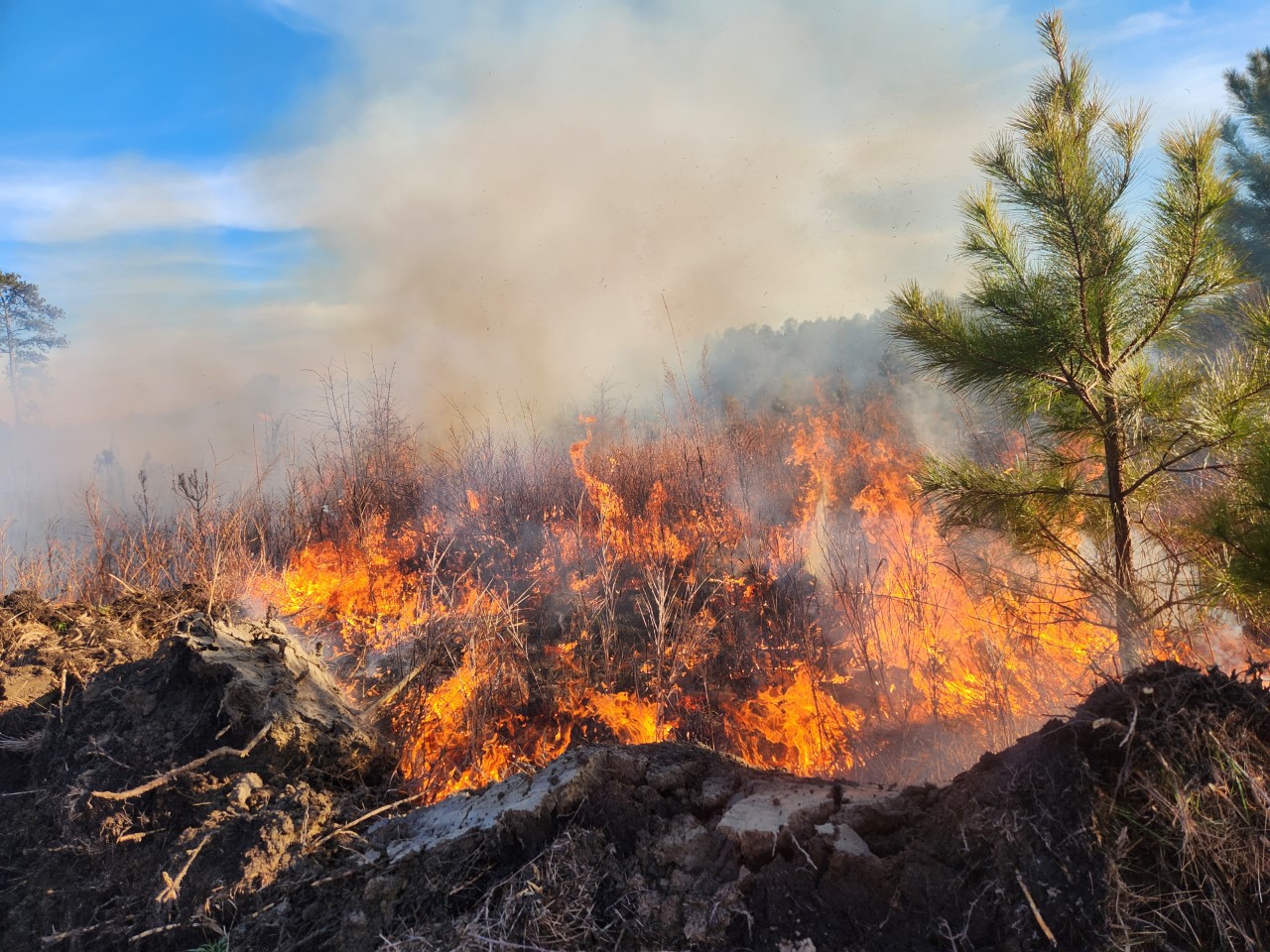A brush fire Wednesday afternoon consumed around 67 acres of land in the area of Knight Farm Road between Halifax and Scotland Neck.
Halifax County Ranger Jim Short of the North Carolina Forest Service said the cause of the fire was attributed to “an escaped prescribed burn.”
Short said the forest service along with the Tillery and Scotland Neck volunteer fire departments were dispatched shortly after 2:30 p.m. and arriving units observed between 25 to 30 acres burning — the fire moving quickly due to high winds and low humidity.
The forest services deployed two bulldozers and requested aircraft while the fire departments worked on holding and extinguishing one flank of the fire.
The forest service dispatched a scout plane for recon work and two single-engine air tankers with a lead plane to slow the fire growth and allow firefighters on the ground to overtake the blaze.
Short said the fire was stopped at 67 acres with some of the property owner’s property burned as well as some timberland owned by Roseburg.
The scene was cleared shortly after 7 p.m.
Short said Tillery dispatched two engines and personnel; Scotland Neck a water tanker and personnel; a dozer and operator from the Halifax County Forest Service; a dozer and operator from the Northampton County Forest Service; a Halifax County ranger with a type 6 engine; an Edgecombe County ranger with a type 6 engine; a Nash County ranger with a type 6 engine; the scout plane, the two single-engine air tankers and the lead plane which were dispatched from district 6 based in Fayetteville.
Photos courtesy of the Halifax County ranger station
-
 Click to open image!
Click to open image!
Click to open image!
Click to open image!
-
 Click to open image!
Click to open image!
Click to open image!
Click to open image!
-
 Click to open image!
Click to open image!
Click to open image!
Click to open image!
-
 Click to open image!
Click to open image!
Click to open image!
Click to open image!
-
 Click to open image!
Click to open image!
Click to open image!
Click to open image!
-
 Click to open image!
Click to open image!
Click to open image!
Click to open image!
-
 Click to open image!
Click to open image!
Click to open image!
Click to open image!
-
 Click to open image!
Click to open image!
Click to open image!
Click to open image!
https://rrspin.com/news/7117-with-wildfire-season-underway-rangers-tackle-67-acre-blaze.html#sigProIdf20e19c45c
Spring wildfire season
March officially signals the start of spring wildfire season and the forest service encouraged residents to practice caution and prioritize safety when burning leaves, limbs and other yard waste.
In 2022, nearly 6,400 wildfires burned more than 27,000 acres across the state.
According to the National Interagency Fire Center, North Carolina ranked third in the nation for number of human-caused wildfires with 99 percent of wildfires in the state resulting from human activity. Escaped outdoor fires continue to be the leading cause of wildfires in North Carolina.
“You continue to be the best defense against wildfires,” said Agriculture Commissioner Steve Troxler. “Always exercise caution with any outdoor burning. Avoid burning on dry, windy days and be sure you have a valid burn permit.”
The forest service recommends the following prevention tips:
Forest Service recommends the following tips:
Consider alternatives to burning. Some types of debris, such as leaves, grass and stubble, may be of more value if they are not burned but used for mulch instead.
Check local burning laws. Some communities allow burning only during specific hours. Others forbid it entirely.
Make sure you have a valid permit. You can obtain a burn permit at any forest service office or authorized permitting agent, or online at this link
Keep an eye on the weather. Don’t burn on dry, windy days.
Local fire officials can recommend a safe way to burn debris. Don’t pile vegetation on the ground. Instead, place it in a cleared area and contain it in a screened receptacle away from overhead branches and wires.
Household trash must be hauled away to a trash or recycling station. It is illegal to burn anything other than vegetative material.
Be sure you are fully prepared before burning. To control the fire, you will need a hose, bucket, steel rake and a shovel for tossing dirt on the fire. Keep a phone nearby, too.
Never use kerosene, gasoline, diesel fuel or other flammable liquids to speed up debris burning.
Stay with your fire until it is completely out.
A fireline should be plowed around the area to be burned when burning agricultural residue and forestland litter. Large fields should be separated into small plots for burning one at a time. Before any burning in a wooded area, contact your NCFS county ranger for technical advice on burning.








